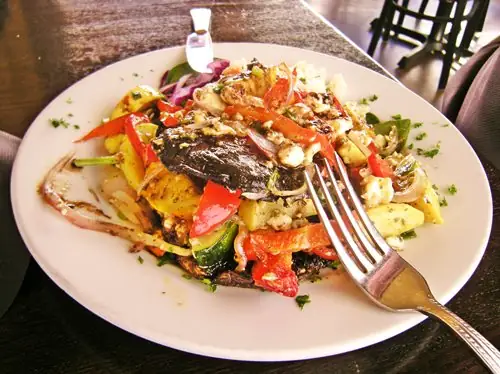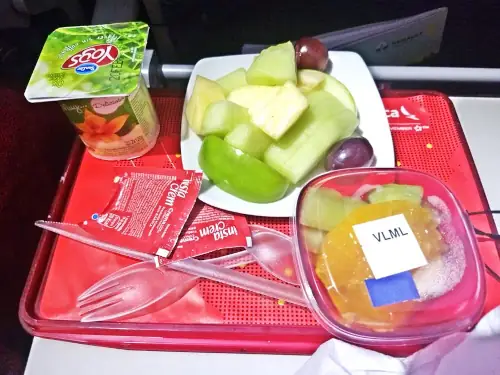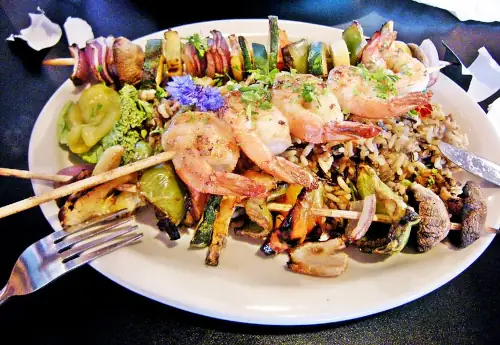Tips on How to Eat Healthy when you Travel
Traveling & Eating Well
Fact Checked
×All the content published in our website is fact checked to validate its accuracy.
Visit our guidelines web page to learn more about our strict processes regarding how we review our content's sources: reliable and reputable journals, media websites, universities, colleges, organizations, and professionals.
Our articles are based on scientific evidence, and the references are included in their footnotes, which are clickable links to sound scientific papers.
First published: 30. May.2019
Eating healthy while traveling
Traveling, whether for business or leisure can upset your eating schedules, make you skip your healthy and wholesome food, or even worse, you may even replace it with high-calorie snacks packed with sugar and fat.
This article has some helpful tips on eating healthy when you travel.
References and Further Reading
(1) Torsten Rahne et al., (2018). Does ambient noise or hypobaric atmosphere influence olfactory and gustatory function?. January 25, 2018. https://doi.org/10.1371/journal.pone.0190837
(2) The City University of New York, (2019) Airline food study 2019-20, 29.Nov.2019. Accessed 30.Dec.2020.
(3) Vanessa Harrar, Charles Spence, (2013). The taste of cutlery: how the taste of food is affected by the weight, size, shape, and colour of the cutlery used to eat it. C. Flavour (2013) 2: 21. https://doi.org/10.1186/2044-7248-2-21
(4) Hasler WL., (2006). Gas and Bloating. Gastroenterol Hepatol (N Y). 2006;2(9):654-662.
(5) Zhang, M., Juraschek, S. P., Appel, L. J., Pasricha, P. J., Miller, E. R., 3rd, and Mueller, N. T. (2020). Effects of High-Fiber Diets and Macronutrient Substitution on Bloating: Findings From the OmniHeart Trial. Clinical and translational gastroenterology, 11(1), e00122. https://doi.org/10.14309/ctg.0000000000000122
(6) Capili B, Anastasi JK, Chang M, (2016). Addressing the Role of Food in Irritable Bowel Syndrome Symptom Management, J Nurse Pract. 2016;12(5):324-329. doi:10.1016/j.nurpra.2015.12.007
(7) Huyghe T, Scanlan AT, Dalbo VJ, Calleja-Gonzalez J, (2018). The Negative Influence of Air Travel on Health and Performance in the National Basketball Association: A Narrative Review. Sports (Basel). 2018;6(3):89. Published 2018 Aug 30. doi:10.3390/sports6030089
(8) McFarland RA, Barach AL, (1936). The relationship between alcohol Intoxication and anoxemla. American J. Med. Science 1936;192(2):186-98. cited here
(9) Dikariyanto V, Berry SE, Pot GK, Francis L, Smith L, Hall WL. (2020). Tree nut snack consumption is associated with better diet quality and CVD risk in the UK adult population: National Diet and Nutrition Survey (NDNS) 2008-2014. Public Health Nutr. 2020 Dec;23(17):3160-3169. doi: 10.1017/S1368980019003914. Epub 2020 Feb 28. PMID: 32106903.
(10) Fayet-Moore F, McConnell A, Tuck K, Petocz P, (2017). Breakfast and Breakfast Cereal Choice and Its Impact on Nutrient and Sugar Intakes and Anthropometric Measures among a Nationally Representative Sample of Australian Children and Adolescents. Nutrients. 2017 Sep 21; 9(10)
(11) Gilbert, D., and Abdullah, J., (2002). A study of the impact of the expectation of a holiday on an individual's sense of well-being. Journal of Vacation Marketing, 8(4), 352-361. https://doi.org/10.1177/135676670200800406
(12) Kumar, A., Killingsworth, M. A., and Gilovich, T., (2014). Waiting for Merlot: Anticipatory Consumption of Experiential and Material Purchases. Psychological Science, 25(10), 1924-1931. https://doi.org/10.1177/0956797614546556
About this Article
How to Eat Healthy when you Travel, A. Whittall
©2025 Fit-and-Well.com. First Published: 19.Feb.2025. Update scheduled for 19.Feb.2028. https://www.fit-and-well.com/fitness/how-to-eat-healthy-during-travel.html
Tags: travel, diet, health, circadian, gases, bloating, airline






